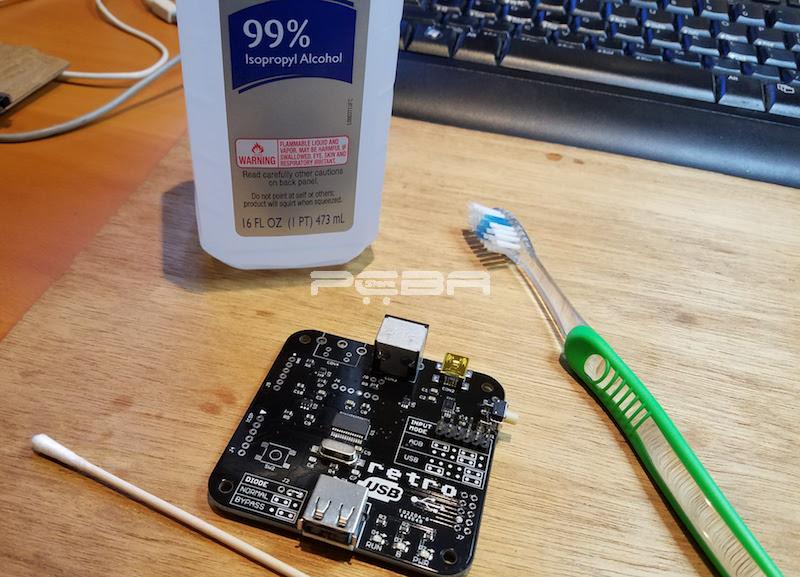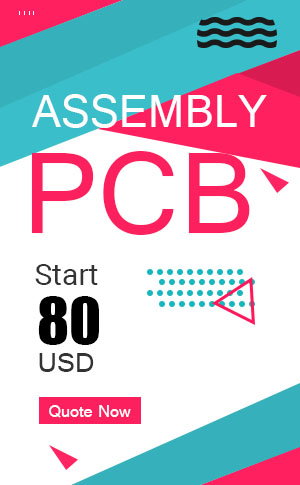General, quoting & support.
Add: Building E, No.58, Nanchang Road, Xixiang , Baoan District Shenzhen City, Guangdong, China
Tel : 0755-27348887
Fax : 0755-27349876
E-mail : svc@pcbastore.com
How to Clean Flux from PCB
Simon / 2020-11-18
Contents [hide]
Printed circuit boards, commonly referred to as PCBs, are not only found in electronic gadgets but can also be bought for custom usage. By custom usage, it means you can get one of those PCBs and try different customized circuits by soldering electrical components onto the board. In most cases, solidifying such a soldered electrical connection requires the use of flux. After all, is done, you need to clean the flux before assembling the components.
In this article, we're going to see what flux actually is, why you need to clean it off the PCB, and explain three ways to accomplish flux removal. Now let's get started.

What Is The Flux?
Flux is a very celebrated name in the electrical industry. It is a chemical used in Automatic PCB assembly and soldering. Electric technicians use it to solidify electrical connections through some other type of soldering process.
Flux does leave some yellow residues during application on the boards. Those residues can damage your PCB board as it slowly eats up the components. It is crucial to clean the residues to avoid inhabitation of the printed wiring on the PCB and obscuring other components.
Flux comes in different types. They are classified into three categories based on the flux activity. They include:
1. Rosin flux
Rosin flux contains natural resin that is extracted from pine trees. The pine contains oleoresin that is later refined to produce resin. It is divided into three:
Rosin (R) flux: This resin is used on clean surfaces, and it leaves no residues after soldering.
Rosin Mildly Activated(RMA) flux: This flux contains activators to clean solder coated lands and component terminations that enable the molten solder to wet the surrounding areas.
Rosin Activated(RA) flux: This flux is the most active of these rosin fluxes, and it leaves lots of residues after the soldering process.
2. No-clean flux
No-clean fluxes do not need cleaning after the soldering process.
3. Water-soluble flux
Organic acid(OA) flux is also composed of resin and other organic materials. Water-soluble flux has a good flux activity, and it gives the best soldering results. They can clean oxides and impurities that help in wetting. Thus cleaning the soldering surface. It can cause contamination on the PCB board, and therefore, it is good to be cautious during the cleaning.
Why We Need to Clean Flux From PCB
Flux residues tend to build on the soldering components on the PCB. The PCB can be a bit delicate, and the following are reasons why you need to clean the flux off the circuit board:
1. Improve the Reliability of PCB
The reliability of an item is solely driven by the nature of the final product. With computer keyboards, no one loses a life if it stops functioning. In such a case, an EMS supplier can forgo the cleaning process and use no-clean flux. On the other hand, board failure could even lead to death requiring strict requirements. In such a case, cleaning should be done after assembling the components, a process that requires thorough testing for effectiveness.
2. Prevent Corrosion On the PCB
The flux residues left on the circuit boards are acidic. If left to sit on the board for long, they draw in moisture from the air, leading to corrosion of the components on the PCB. You can also place your PCB safe from pollution by setting them in enclosures or apply a conformal coating that will prevent air from being trapped into the board. With the coating, moisture can escape on the underside. The only disadvantage of this coating is that if you need to work on your PCB again, you will need to strip it off and reapply a fresh coating.
3. Improving the Aesthetic Appearance of the PCB
The visual appearance of a PCB translates into a manufactures work. A greasy looking residue on your PCB around the components can raise questions among your customers. If there are flux residues on the board, your customers might see it as a defect in your work, which would be turn off.
4. Avoid Adhesion Problems with Conformal Coating
The conformal coating might be the right solution for preventing corrosion, but if some flux residues are left on the PCB before the coating process, it can start to lift from the board. It is more evident if the pockets are further apart, not just on the overall surface. The coatings can be semi-permeable, meaning they can breathe to an extent some moisture can enter and settle on the flux residue and lead to corrosion.
5. Prevent Dendritic Growth From Ion Contamination
Flux residue contains some ions that can link into a chain called a dendrite when they come in contact with air. The dendrites can cause leakage of the current because they are conductive. It isn't much of a concern with no-clean flux since it contains minimal ionic materials that are consumed when change is activated. If the flax is not activated, you will still need to clean the PCB.
Three Ways to Remove Flux from PCB
1.Use A Clean Toothbrush
Did you think that toothbrush was limited in how and where you can use it? Turns out that this personal hygiene item can be used to clean up on numerous occasions. One such event is cleaning flux from a PCB board after soldering. You must be eager to know how, and that's just what I will teach you today. Simply follow these instructions:
What you'll need:
A clean toothbrush
A dry rag
Isopropyl alcohol, or acetone
How to do it:
Dip the clean toothbrush in a solution of isopropyl alcohol or acetone. Flip your hand twice or thrice as you hold the wet toothbrush to flick away the excess solvent solution.
Gently scrub the flux on the PCB with the wetted toothbrush. The isopropyl alcohol or acetone will dissolve the flux. However, you should take care not to apply too much pressure as this may break the soldered points. Repeat this step if necessary until all the flux is removed.
Once all the flux is removed, wipe down the now clean area with a dry rag. Clean the toothbrush in distilled water. Allow the printed circuit board some time to dry out and then blow any remaining flux dust with canned air.
2.Use an acid brush
This is probably the cheapest dedicated PCB flux cleaner. The procedure is also simple and straightforward- I bet you'll like this one. Let's see how this works.
What you'll need:
An acid brush
A liquid dispenser (a pump bottle or a wash bottle can do)
A solvent (isopropyl alcohol, or any other that is above 90%proof)
A paper wipe
Another great advantage of isopropyl alcohol is that it's cheap and readily available and evaporates rapidly. Compared to any other PCB flux cleaner, isopropyl alcohol contains far much lesser chemicals. Nevertheless, you should check to ensure the isopropyl alcohol isn't going to damage any of the components you're working with. This is not to mention that you should have latex gloves on and in a well-ventilated area.
How to do it:
Cut the acid brush to angle the bristles to leave s shorter and a longer side. The shorter side should ideally be scrubbing, while the longer side should remove flux from hard to reach places.
Wet the brush in the solvent solution and gently scrub the flux residue off the board. You may also wet the flux area directly.
Wipe off the cleaned area to dry the excess solvent. Isopropyl alcohol will evaporate in seconds, so you do not have to stress over-drying the board. Your PCB is now clean and free of flux.
3.Use a Poly Clens
Poly Clens in a product specifically designed for cleaning flux off PCBs. Your neatly soldered circuit boards deserve a better clean up job. The flux should not dilute the correctly done job. Luckily, one of the PCB DIYers agrees totally. He shared a method he learned online. Believe me, after trying it too, you'll be in for a surprise.
What you'll need:
A container big enough to immerse your soldered PCB
Poly Clens solution
How to do it:
Put a sufficient amount of Poly Clens solution in the container.
Submerge the assembled board into the solution as you stir it gently for around 30 seconds.
Rinse the circuit board with distilled water once the flux is removed.
Dry the PCB with a heat gun.
Essentially, this is the simplest method as you do not have to scrub a thing with a brush. The Poly Clens solution will do all the work for you.
Conclusion
Cleaning flux off your PCBs is as crucial as finishing the soldering job itself. Although one may whine about how unpleasant cleaning feels, the three cleaning methods shared in this guide are more than enough to give your PCB a sparkling finish. Just don't let the PCB look messy over a job you could do in under two minutes and without breaking a sweat. Or you could just cooperate with reliable like PCBA Store to help deal with such works.







